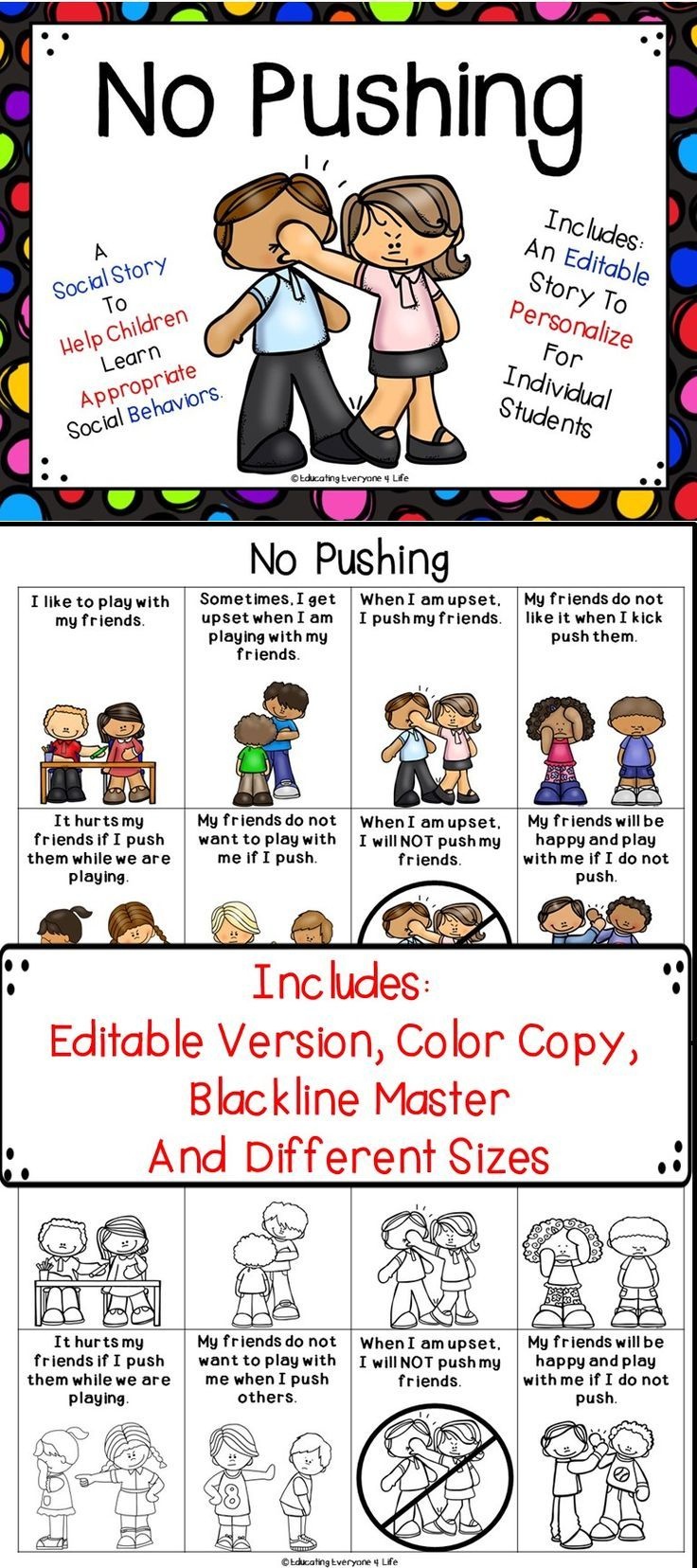Visual social stories have proven to be an effective way to help children, including those with autism, deal with various situations and behaviors. These stories use a combination of words and images to create narratives that can aid in understanding and improving social skills. In this article, we will explore the benefits of using visual social stories and showcase a selection of resources available to support educators and parents in implementing this powerful tool.
- Social Stories for Dealing with Behaviors
 One resource that stands out is a visual social story packet for children with autism that focuses on behavior management. Using this packet, educators and parents can address challenging behaviors and provide clear instructions on appropriate behavior. The visual aspect of these stories helps children better understand expectations and learn how to respond in different situations.
One resource that stands out is a visual social story packet for children with autism that focuses on behavior management. Using this packet, educators and parents can address challenging behaviors and provide clear instructions on appropriate behavior. The visual aspect of these stories helps children better understand expectations and learn how to respond in different situations.
 With the help of visuals, children with autism can better comprehend behavioral expectations, leading to improved social interactions. By offering clear visual cues, these social stories provide a structured way of teaching social skills that can be beneficial for children on the autism spectrum.
With the help of visuals, children with autism can better comprehend behavioral expectations, leading to improved social interactions. By offering clear visual cues, these social stories provide a structured way of teaching social skills that can be beneficial for children on the autism spectrum.
- Social Stories for Making Friends
 Another important aspect of social development for children is making friends. Through visual social stories, children can be guided on how to initiate conversations, share, take turns, and be a good friend. One printable social story resource emphasizes the importance of making friends in a respectful and inclusive way, promoting positive social interactions.
Another important aspect of social development for children is making friends. Through visual social stories, children can be guided on how to initiate conversations, share, take turns, and be a good friend. One printable social story resource emphasizes the importance of making friends in a respectful and inclusive way, promoting positive social interactions.
 In addition to making friends, it is crucial to address inappropriate behaviors that can hinder positive relationships. This social story helps children understand the consequences of hitting and provides alternative strategies for managing their emotions.
In addition to making friends, it is crucial to address inappropriate behaviors that can hinder positive relationships. This social story helps children understand the consequences of hitting and provides alternative strategies for managing their emotions.
- Enhancing Behavior and Social Skills at School
 Classroom management is vital for creating a conducive learning environment. Visual social stories contribute significantly to behavior improvement within educational settings. They assist children in understanding and following classroom rules, respecting others, and utilizing appropriate communication strategies. Teachers and parents can utilize these stories to establish a consistent and positive classroom culture.
Classroom management is vital for creating a conducive learning environment. Visual social stories contribute significantly to behavior improvement within educational settings. They assist children in understanding and following classroom rules, respecting others, and utilizing appropriate communication strategies. Teachers and parents can utilize these stories to establish a consistent and positive classroom culture.
 With a range of available social stories addressing different scenarios like carpet time, group activities, and general school rules, educators can create a comprehensive toolkit to support behavior and social skill development. These visual aids provide students with a clear understanding of expectations while creating a positive and inclusive learning atmosphere.
With a range of available social stories addressing different scenarios like carpet time, group activities, and general school rules, educators can create a comprehensive toolkit to support behavior and social skill development. These visual aids provide students with a clear understanding of expectations while creating a positive and inclusive learning atmosphere.
- Additional Resources and Support
 There are various online platforms and toolkits available to access additional social stories, including those designed for individuals with Fetal Alcohol Spectrum Disorder (FASD). These resources address unique challenges faced by children with FASD, aiding in their understanding of social situations and providing guidance on appropriate behavior.
There are various online platforms and toolkits available to access additional social stories, including those designed for individuals with Fetal Alcohol Spectrum Disorder (FASD). These resources address unique challenges faced by children with FASD, aiding in their understanding of social situations and providing guidance on appropriate behavior.
 For educators specifically, social stories offer inspiration and ideas for teaching social skills to young learners. Kindergarten teachers, in particular, can utilize these resources to create engaging and interactive activities that foster social development and emotional well-being.
For educators specifically, social stories offer inspiration and ideas for teaching social skills to young learners. Kindergarten teachers, in particular, can utilize these resources to create engaging and interactive activities that foster social development and emotional well-being.
 Social stories also serve as valuable tools for behavior management in special education settings. By catering to the specific needs of students with diverse abilities and learning styles, visual social stories help promote a positive and supportive classroom environment.
Social stories also serve as valuable tools for behavior management in special education settings. By catering to the specific needs of students with diverse abilities and learning styles, visual social stories help promote a positive and supportive classroom environment.
In conclusion, visual social stories are effective tools for children, including those with autism, to navigate social situations and develop appropriate behaviors. By combining visuals with narrative content, these stories enhance comprehension and engagement. Whether it’s addressing behavior management, fostering friendship skills, or establishing positive classroom dynamics, visual social stories play a vital role in supporting children’s overall development.